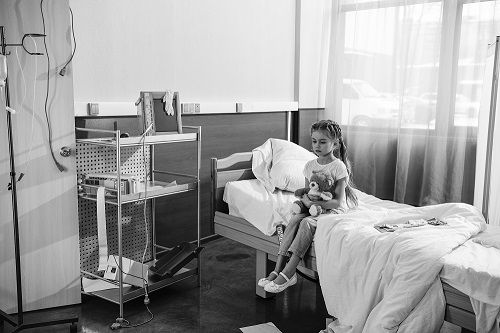RSV in Children with Influenza-Like Illness
A team of researchers sought to study the epidemiological characteristics of RSV in pediatric influenza-like illness cases.

Respiratory viruses are always a concern during winter months, but with the COVID-19 pandemic, the issue has become increasingly complex. Interventions, access to testing, transmission dynamics, and masking are all trends we’ve been facing when it comes to the spread of respiratory diseases. Respiratory syncytial virus (RSV) is one such respiratory virus that causes infections and deaths each year, especially in children.
For many children, the winter months are a time of influenza-like illness (ILI) in which various respiratory infections can call disease. RSV is one of the major causes of ILI and lower respiratory tract illness in young children. For those children and their families, many seek medical care to help alleviate symptoms and prevent or respond to more severe disease.
A team of researchers sought to study the epidemiological characteristics of RSV in pediatric influenza-like illness cases, with a focus on Lombardy, a region in Northern Italy with roughly 10 million inhabitants. Across 2 winter seasons, 2014-2015 and 2020-2021, they utilized data from the Italian influenza surveillance network (InfluNet). As RSV is responsible for over 34 million lower respiratory tract infections globally and accounted for 199,000 pediatric deaths in those under five years, this study is exceedingly important. The team collected surveillance data such as aggregate consultations for ILI, case-based data like onset of symptoms and influenza vaccine status, and virological influenza surveillance data like types and subtypes of influenza and detection of RSV.
The authors reported that after their descriptive and quantitative analysis with Open Epi and R, “during the seven winter seasons considered (from 2014–2015 to 2020–2021), the cumulative incidence of ILI cases in the general population ranged from 5% in 2020–2021 to 16.2% in 2017–2018, with a mean value of 10.3%. In all seasons the highest cumulative incidence of ILI cases was reported in the 0–4 years age group (mean: 22.7%, range: 7.7%–43.6%), followed by the 5–14 years age group (mean: 13.4%, range: 3.2%–21.0%), then decreasing in the adult (15–64 years) age group (mean: 10.1%, range: 5.5%–15.6%), and in the ≥65 years age group (mean: 4.6%, range: 2.0%–7.4%). From 2014–2015 to 2020–2021 season, 3971 NPS were collected from as many ILI outpatients (mean number of NPS/season: 567, range: 519 [in 2020–2021] – 631 [in 2019–2020]); males accounted for 51.0% (2024/3971; p = 0.6) of ILI cases; the median age was 34 years (IQR: 43.4 years) and 23.7% (943/3971) of ILI cases reported the presence of comorbidities.”
Ultimately, that nearly 20% of pediatric ILI was a result of RSV is a significant finding that points to a need for ongoing education and prevention efforts. Positive rates for RSV increasingly so significantly for those children 0-5 points to a specific age group for intervention, especially when one considers that the authors found that children with underlying health conditions aged five years or less had a five-fold greater risk of getting RSV than otherwise healthy children of the same age group. Continued surveillance and targeted interventions for those children five or younger with underlying health conditions, should be utilized as a prevention strategy for RSV.
